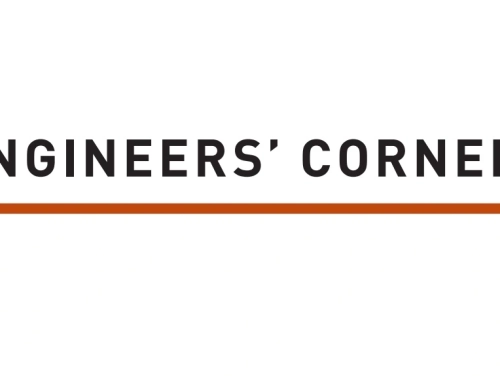Braces in a tension-only braced frame are designed to resist, in tension, 100 per cent of lateral shear forces in the braced frame. Since the resistance of braces acting in compression is ignored in the design, tension-only braced systems must be direct-acting and concentrically braced frames. Over the last 25 years, ductile design provisions for tension only braced frames have been introduced in modern codes and standards in multiple code cycles. This article aims to identify the various types of tension-only braced frames, covered in CSA S16-14 and NBC 2015, and the range of application for each type and its subset.
Traditional tension-only bracing
Tension-only braced frames have been commonly used in construction of buildings that have a high storey(s) but are subjected to relatively small lateral forces, such as single-storey buildings. Since all braces are assumed to resist tension only, very slender braces (KL/r > 200) can be used, resulting in use of lighter braces and material saving. In many applications, the maximum slenderness limit for tension members (KL/r ≤ 300) need not apply, provided vibrations and sag at service load levels can be controlled.
Seismic applications
Traditional tension-only braced frames generally exhibit a pinched hysteretic behaviour. Except for low seismicity applications, S16-14 generally specifies frame height limits and member and cross-sectional stockiness requirements for the braces where ductile behaviour is an explicit design requirement. S16 permits the use of tension-only bracing in three types of seismic force resisting systems named in the National Building Code: Moderately ductile concentrically braced frames (MDCBF), limited ductility concentrically braced frames (LDCBF) and conventional construction (CC).
1. Moderately ductile concentrically braced frames
Tension-only braces in MDCBF are required to meet the stringent cross-section stockiness and the maximum member slenderness limits for compression braces (KL/r ≤ 200) used in MDCBF, among other requirements. Consequently, these tension braces resemble the compression braces used in MDCBF instead of the above-mentioned slender braces. In addition, tension only MDCBF are restricted to a maximum height of 20 metres, except for low seismicity (IEFaSa(0.2) < 0.35) applications. These restrictions and limits are summarized in the table below. With regard to brace connection design requirements, the provision for ductile rotation at or near the brace ends also applies to tension-only braces. An example is shown in the figure below.

2. Limited ductility concentrically braced frames
Design requirements for tension only MDCBF also apply to tension-only LDCBF but Clause 27.6 of S16-14 permits a number of exemptions and relaxations. The maximum frame height limit for moderate and high seismicity (IEFaSa (0.2) ≥ 0.35) applications is relaxed to 40 metres. Moreover, for one- and two-storey buildings, the cross-section stockiness and maximum member slenderness limits for the braces are also relaxed:
a) Where KL/r > 200, there is no restriction on cross-section stockiness (b/t ratios) and
b) KL/r ≤ 300.
It should be noted that the brace slenderness is restricted to 300 as a seismic performance requirement. It should not be confused with the serviceability limit for tension members in general (KL/r ≤ 300), which may be waived if vibrations and sag are controlled by other means.
3. Conventional construction
Traditional tension-only braces (slender) may be used for conventional construction in low seismicity (IEFaSa (0.2) < 0.35) applications without any height restriction and for conventional construction of low-rise buildings (height ≤ 15 m) in higher seismicity applications. Otherwise, the braces must satisfy a specific b-to-t limit, i.e. the stricter of LDCBF and Class-2-section limits.
Conventional construction featuring slender tension-only braces remains popular for low-rise and small buildings in low seismicity applications. Their suitability and cost effectiveness for other applications depend on many factors, including building Importance Category, seismicity, building height, diaphragm force magnitude, etc.






